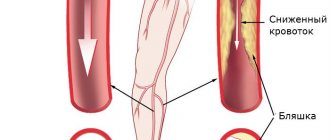In recent years, the number of patients seeking help for the treatment of sexually transmitted diseases has increased dramatically. The rapidly increasing dynamics are primarily to blame for the low sexual culture of the population, as well as the habit of neglecting one’s health and delaying the problem until the last moment. Doctors, meanwhile, strongly advise regular preventive examinations and appropriate diagnostics after unprotected sexual intercourse with a new partner. In addition to sexually transmitted diseases (the term “venereal” comes from the name of the Greek goddess of love, Venus), there are many more STDs that cause a lot of concern.
For those who do not have professional medical knowledge, we will give a brief description of such diseases:
- The causative agents are bacteria, viruses, fungi and other microorganisms. In some cases, mixed infection occurs.
- They are characterized by local and general manifestations of the pathogenic effects of infection on the body.
- You can become infected by contact with a sick person or a carrier of the infection.
The main ways of contracting STIs:
- Unprotected sexual intercourse, including non-traditional (anal or oral). The infection is transmitted by contact of mucous membranes, so the fact of contact itself is important.
- Contact-household route: use of linen or other items used by the carrier of the disease.
- Careless blood transfusion. Bacteria from the blood of an infected donor remain on unsterile needles and medical instruments.
The incubation period for the most common sexually transmitted diseases is:
| Disease | Incubus period | Symptoms and complications |
| Chlamydia | from 1 to 3 weeks | Pharyngitis, Reiter's syndrome and proctitis. Men develop urethritis, orchitis, epididymitis, and infertility. Symptoms and complications of chlamydial infection in women are endometritis, salpingitis, cervicitis, perihepatitis, infertility. It is not uncommon for chlamydia to occur in women in a latent form. |
| Gonorrhea | from 2 to 10 days | Pharyngitis, disseminated gonococcal infection, proctitis. When infected, men may suffer from epididymitis, urethritis, orchitis, and infertility. Women experience salpingitis, endometritis, cervicitis, premature rupture of amniotic fluid (during pregnancy), and pelvic inflammatory diseases. |
| Ureaplasmosis | from 3 to 5 weeks | Bacterial vaginosis, pelvic inflammatory disease in women and non-gonococcal urethritis in men. |
| Mycoplasmosis | from 3 to 5 weeks | Discharge from the urethra in men and bacterial vaginosis in women. |
| Trichomoniasis | from 1 to 4 weeks | Discomfort during urination and sexual intercourse, discharge from the genitals, nagging pain in the lower abdomen. |
| Chancroid | from 2 to 10 days | Formation of ulcers in the genital area. |
| Donovanosis | from 1 to 12 weeks | Enlarged lymph nodes, the occurrence of ulcers in the perianal and inguinal area. |
| Syphilis | 3 to 4 weeks | Enlarged lymph nodes, condylomas, rash, damage to bones, cardiovascular and nervous systems. Frequent consequences of syphilis in women are premature birth and other pregnancy complications. |
| Genital herpes | from 1 to 25 days | The appearance of vesicles and ulcers on the external genitalia. |
| Condylomas acuminata | from 2 to 9 months | Men: condylomas on the penis and in the anal area. Women: condylomas on the vulva, cervix, and anal area. |
| Immunodeficiency virus (HIV) | from 2 weeks to 6 or more months | Fever, enlarged lymph nodes, pain when swallowing, red spots on the skin, diarrhea. |
| Hepatitis B | from 30 to 180 days | Loss of appetite, weakness, fatigue, darkening of urine, change in stool color, joint pain, jaundice, nausea. Sometimes there is a feeling of discomfort in the right hypochondrium. |
| Cytomegalovirus | from 20 to 60 days | Increased body temperature and, as a result, chills, headache, malaise. In people with weak immunity, cytomegalovirus affects the eyes, lungs, brain, and digestive system. |
| Candidiasis | from 4 days to 2 months | Burning and itching of the external genitalia, pain during sexual intercourse and urination. In women, there is a cheesy discharge from the vagina, in men there is redness of the head of the penis and a white coating on it. |
| Scabies | from 8 to 12 days | The main symptom of scabies is itching of the affected area, but Sarcoptes scabiei is also characterized by symptoms such as: pinpoint vesicular rashes, gray dotted stripes on the skin. |
Modern classification of STDs and STIs
In the last century, the list of sexually transmitted diseases was carefully systematized and replenished with new species. A number of new infections have been added to the already known diseases. All of them are combined into one large group called “STDs” or “STIs”. It is usually divided into several subgroups:
- Diseases of bacterial origin . These are gonorrhea, syphilis, donovanosis, inguinal lymphogranulomatosis and chancroid.
- Viral infections that can be transmitted not only through sexual contact . They have a detrimental effect on the entire body, affecting several systems at once:
- Human immunodeficiency virus, abbreviated as HIV. The pathology is still not fully understood and is considered very dangerous, its symptoms are varied and unpredictable. It is difficult to treat, especially in the last stages.
- Hepatitis B and Usually enter the body through contaminated blood, but there is a possibility of sexual transmission. In the absence of proper treatment, they lead to serious consequences, in particular, to the destruction of liver cells.
- Genital herpes (herpes virus type 2). Poses a particular threat to pregnant women. Having penetrated the placenta, it causes complications in the development and formation of the fetus.
- Human papillomavirus. Leads to a change in the nature of tissue growth. There are a large number of varieties of the virus, and some provoke serious consequences, including malignant tumors.
- Cytomegalovirus is the causative agent of cytomegaly. Once in the body, it “attacks” healthy cells, which begin to greatly increase in size. May manifest itself in damage to the genitourinary tract. It is transmitted both sexually and through household contact.
- Infections caused by parasitic protozoa (protozoal infections):
- Trichomoniasis. The causative agent, Trichomonas, causes a lot of inconvenience to its carrier. Accompanied by unpleasant symptoms: itching, burning sensation of the mucous membranes. Often develops in conjunction with gonorrhea, HIV or fungal infection. Women are predominantly affected by the pathology.
- Candidiasis (thrush) is a difficult to cure, although not the most dangerous disease. Fungal opportunistic flora is activated at the slightest decrease in immunity, and therefore often accompanies other diseases. Under the influence of the fungus, the normal flora of the woman’s genital tract changes, and therefore the pH balance of the vagina is disrupted. Candida increases the risk of inflammation of the genitals, mouth, and other mucous membranes. The most common female problems associated with this infection are vaginitis and colpitis. Representatives of the stronger sex should not lose their vigilance either, because the fungus also affects the male body. If unfavorable flora is detected in a partner, treatment is necessary for both.
- «New" sexually transmitted diseases
- Chlamydia. The parasite that causes chlamydia is also the culprit of many diseases of the female genitourinary system: colpitis, cervicitis, endometritis, salpingoophoritis. Chlamydia affects any mucous membrane, both in women and men. This can be the mouth, throat, intestines, eyes and even joints. Pathogens often provoke conjunctivitis, proctitis, urethritis, and pharyngitis. It should be noted that chlamydia is usually asymptomatic in the early stages, which is why it is diagnosed late, which increases the risk of complications.
- Myco- and ureaplasmosis. Mycoplasma bacteria are considered opportunistic, but it has now been proven that it is a parvovirus infection that disrupts the process of cell division. Often the disease occurs in a latent form, but can lead to acute and chronic inflammation. It poses a threat during pregnancy – the woman’s body and the fetus itself suffer. There is a high risk of miscarriage.
- Other types of STDs:
- Scabies. It is transmitted through bodily contact with a carrier of scabies or a tick bite. The best prevention of infection is following simple hygiene rules. For ticks, a sweaty and dirty body is an ideal habitat. Of course, we must not forget about banal pickiness in intimate relationships and the use of barrier contraceptives. Nowadays, scabies is becoming less and less common, whereas in the past, it could easily become the cause of an entire epidemic.
- Phthiriasis, better known as pubic louse. Like scabies, it is a thing of the past and is found mainly in people living in unsanitary conditions.
The diseases listed below are rarely diagnosed, but they are classified as STDs, so they cannot be ignored:
- Kaposi's sarcoma. It can be obtained not only through sexual contact. Most often accompanies the terminal stage of HIV – acquired immunodeficiency syndrome. It manifests itself in multiple painful malignant formations on the mucous membrane, causing severe discomfort.
- Molluscum contagiosum is a type of smallpox. Infection occurs through contact with a sick person. It affects the skin and the surface of the mucous membrane: small pimples appear on the genitals, but the area of the pathological focus is limited.
We can talk endlessly about the causes of male and female sexually transmitted diseases. Diseases of the genitourinary system are favored even by those microorganisms that, at first glance, seem to have nothing to do with STDs. Under certain conditions, when entering the body, weakened by stress, lack of vitamins or a recent illness, they can easily provoke pathology. There are a huge number of variations: for example, E. coli, which has nothing to do with the genitals at all, causes balanoposthitis in men if personal hygiene rules are not followed. Sometimes it develops as a result of exposure to simple staphylococcus or any other pathogen.
Disease statistics in recent years have looked depressing: there are very few absolutely healthy people, especially among the fair sex. Serious diseases are rare, but dysbacteriosis occurs at almost every step. This begs a logical question: “What then is considered the norm if the problem concerns the majority?” Scientists and doctors have long been debating whether gardnerellosis (bacterial vaginosis, vaginal dysbiosis, vaginitis) is a disease. Because of it, the balance between “good” and “harmful” bacteria is disrupted, but how dangerous is this? The cause of vaginal dysbiosis can be not only infection, but also:
- hormonal imbalances;
- weakening of the immune system;
- taking antibiotics and hormones;
- contact with toxic substances;
- use of intrauterine devices to protect against unwanted pregnancy;
- promiscuous sexual relations.
The causative agent of vaginosis lives in the female genital tract, which is why only ladies suffer from it. The culprits are: gardnerella, mushrooms, mycoplasmas, lactobacilli and other representatives of opportunistic flora. In some cases, the disease negatively affects the health of the sexual partner, so it is rightfully classified as an STD.
The Ebola virus, which not long ago was actively broadcast by all the media, is also transmitted through sexual intercourse, but during the incubation period it is practically not contagious.
As you can see, there are many germs and viruses that can cause STIs. They are united solely by the route of transmission; everything else - symptoms, correct diagnosis and treatment - requires an individual approach.
What does a venereologist treat?
Venereology specialists diagnose and treat infectious pathologies of the female and male genitourinary system. Today, medicine has discovered about 25 types of diseases that are transmitted through any form of sexual contact. The source of infection is a sick sexual partner. Sexually transmitted diseases are usually abbreviated as “STDs”.
Pathogenic antigens that penetrate the human body through the mucous membranes of the internal and external genitalia cause failure of the reproductive system. This often leads to infertility, both male and female. STDs can, in rare cases, be transmitted through saliva, breast milk, and even from an infected mother to her fetus through the placenta.
If you do not consult a venereologist in a timely manner and do not begin treatment for sexually transmitted infections, this is fraught with the development of serious complications. Most of all, the infectious focus, in addition to the reproductive system, affects neighboring organs, such as the kidneys and bladder. Also, the central nervous system, bones and joints, brain and other vital organs and systems of a person suffer from advanced forms of STDs. The progression of sexually transmitted infections in the body is dangerous due to severe complications, which in individual cases can cause death.
Venereal pathologies in the acute stage usually occur in a pronounced clinical form. Therefore, if alarming symptoms are detected, the patient must immediately contact a venereologist to establish the etiology of the infection and receive qualified medical care. But there are situations, mainly for women, when there are no symptoms of STDs. Thus, the disease transforms into a chronic form, which leads to severe and sometimes irreversible health consequences.
Medical specialists strongly recommend that every patient undergo regular examinations by specialized doctors and take the necessary tests to identify pathogenic microflora. It is important for women to visit a gynecologist at least twice a year. Men should consult a urologist and andrologist with similar frequency. Even if nothing bothers a person, a visit to the doctor is necessary! It is worth understanding that some sexually transmitted pathologies tend to be asymptomatic. When a venereological infection is diagnosed, the patient will be referred to a specialist - a venereologist, who will be able to draw up an effective treatment regimen.
| Name of service | Price | Special price* |
| Primary appointment with a dermatovenerologist, therapeutic and diagnostic, outpatient | 1,800 rub. | 1,000 rub. |
| Primary appointment with a dermatovenerologist K.M.N., therapeutic and diagnostic, outpatient | 2,100 rub. | |
| Summarizing the examination results and drawing up an individual treatment program, level 2 of complexity | 1,000 rub. | |
| Skin disinfection and treatment with specific products /1 session | 270 rub. | |
| Removal of condylomas on the mucous membrane / for one zone 0.1 cm * 0.1 cm or (1 mm x 1 mm.), for 1 field. | 1,000 rub. | |
| Dermatoscopy | 800 rub. | |
| View the entire price list | ||
| *Special prices are not subject to additional promotions and privilege cards. | ||
In order to prevent infection of the genital organs with pathogenic infections, the specialists of our clinic - venereologists - advise adhering to the following rules:
- When having sexual intercourse with a non-regular partner, always use a condom;
- avoid casual sexual contacts, as well as sexual relations with a person from a vulnerable group (with immune disorders);
- have sex with one partner;
- genital medical examination, gynecological and urological procedures should be trusted only to specialists with an impeccable reputation.
Symptoms of STDs in women
In women, sexually transmitted diseases are often mild or asymptomatic. If the problem does manifest itself, it will be difficult to diagnose a specific disease, since many STDs have a similar clinical picture. The main difficulty is that it is necessary to distinguish the symptoms of a sexually transmitted disease from any other infection that occurs with similar symptoms. We have compiled a list of the main “red flags” that will help determine the presence of a sexually transmitted disease:
- painful sensations in the groin area when moving;
- feeling of itching and burning when urinating;
- discomfort in the lower abdomen;
- pain during intercourse;
- irritation on the skin of the genital organs;
- menstrual irregularities (irregularity, spotting between periods);
- unhealthy vaginal discharge: white, green, brown or any other unusual color with an unpleasant odor (may be excessively abundant);
- slight increase in body temperature;
- frequent desire to visit the toilet.
Don’t forget about precautions - follow basic hygiene rules, use protective equipment when having sex with a new partner, and visit a doctor every six months for a preventive examination.
Do not delay treatment, and if the slightest discomfort occurs, immediately contact a specialist. Any disease is easier to prevent than to cure. Chronic pathologies are always fraught with serious complications.
When to make an appointment with a venereologist
If the following problems occur, you should immediately seek help from the clinic:
- rash on the genitals;
- cessation of the menstrual cycle;
- pain during intercourse;
- problem with urination;
- itching and other painful sensations of the genital organ.
The main cause of sexually transmitted diseases is considered to be frequent changes of partners. Try to use contraception as it reduces the risk of STDs. But monogamy is best, as the risk of developing sexually transmitted diseases is significantly reduced.
Symptoms of STDs in men
STDs in men manifest themselves in the following symptoms:
- pain in the back, sacrum, lower back;
- pain in the scrotum and entire groin area;
- itching and burning when urinating;
- unusual discharge from the penis - white, brown, too abundant with a specific odor;
- frequent urination;
- ejaculation disorders, erectile dysfunction;
- slight increase in body temperature.
Each disease has its own characteristics, which only a specialist can evaluate. In order to unambiguously diagnose an STD, the patient, regardless of gender, must contact a venereologist and, after an initial examination, undergo a series of tests for pathogens.
What happens when you visit a venereologist
People who are about to consult with this doctor for the first time in their lives are often interested in how an examination by a venereologist goes.
» The examination process differs depending on the gender of the patient.
Women will undergo an examination in a gynecological chair, as at a standard appointment with a gynecologist. The structure of the female genital tract is such that it can only be assessed through examination on a special chair. Before conducting an examination, the doctor will ask about complaints and clarify what specifically brought the patient to the appointment. In some cases, if there are no complaints and the patient feels well, a chair examination may not be performed.
Men do not need to lie down on a gynecological chair. They will have to undress from the waist down. Giving the doctor the opportunity to assess the condition of the skin in the genital area, the general appearance of the penis and scrotum. In some cases, the doctor also palpates the inguinal lymph nodes, but this procedure is painless.
In men, the examination additionally includes a digital rectal examination of the prostate gland. This method is unpleasant for males. However, it can give the doctor a large amount of information about the patient’s health status, and therefore cannot be abandoned.
STDs and pregnancy
Most STIs have extremely adverse effects on the body of the mother and fetus. Some infections have a detrimental effect on the process of pregnancy itself, threatening miscarriage, stillbirth, frozen and ectopic pregnancy. Others influence intrauterine development, causing various abnormalities. “Dormant” diseases are no less dangerous than those occurring in a chronic form, so they also need to be detected and treated in a timely manner.
In recent years, great attention has been paid to the development of a unified diagnostic system for pregnant women. Now, when registering, expectant mothers are tested for TORCH infections. The abbreviation stands for:
- T – toxoplasmosis;
- O – syphilis, hepatitis, bacterial and viral diseases;
- R – rubella;
- C – cytomegalovirus;
- H – herpes.
When is it necessary to immediately visit a specialist?
It is necessary to consult a venereologist in cases where any changes in the functioning of the organs of the reproductive system have been noticed, regardless of the intensity of their manifestation:
- atypical discharge from the genitals, accompanied by an unpleasant odor;
- itching and burning in the pubic area;
- frequent attacks of pain in the lower abdomen;
- increased body temperature in the presence of atypical discharge;
- inflammatory processes localized in the mucous membranes of the genital organs;
- pain during sex and after intimacy;
- pain and burning sensation during urination;
- presence of blood impurities in urine;
- whitish coating on external organs;
- enlarged lymph nodes in the groin;
- the appearance of ulcers, blisters, warts and other neoplasms.
Ignoring these signs is extremely dangerous. The development of infectious processes in the genital area can provoke the appearance of severe pathologies of other organs and life support systems.
Diagnosis of infections and sexually transmitted diseases
In order to obtain an accurate diagnosis, it is necessary to undergo a comprehensive examination and undergo a series of tests. You should not rely on just one research method. Even if some of the tests showed the absence of the pathogen, the risk of its presence in the body cannot be excluded. Standard list of necessary examinations to identify STIs:
- flora smear and cytology;
- enzyme-linked immunosorbent assay (ELISA diagnostics) and direct immunofluorescence (DIF);
- bacteriological culture (BAC culture);
- polymerase chain reaction (PCR diagnostics)
- determining the presence of antibodies to a specific pathogen;
- Ultrasound of the pelvic organs.
What tests can be prescribed by a venereologist?
A visit to a venereologist is most often not complete without testing.
The tests allow us to assess the general health of the patient’s genitourinary system. And also track the dynamics of the disease if treatment is carried out.
The substrate for research can be a variety of biological fluids. Most often they use urine, blood, secretions released from the urethra, and sperm in men. The main method of obtaining biological material is a smear.
Thanks to it, it is possible to easily take biological material from women. For men, this procedure is unpleasant and may be associated with discomfort, but its diagnostic value is quite high.
The obtained biological material can be studied in several ways. Often prescribed:
- smear microscopy, during which the material is examined under a microscope after it has been specially stained;
- smear culture, which can be used to diagnose many diseases, especially if they are based on bacterial infection;
- PCR is a modern research method that is highly accurate, but is not always prescribed due to its rather high cost;
- The ELISA method, which involves a reaction between antibodies and antigens, is also often used as a screening method.
At his discretion, the doctor can always prescribe additional laboratory or instrumental examinations. So, it is often recommended to undergo an ultrasound of the pelvic organs.
In women, scrapings from the cervix can be taken, and CT and MRI may be performed if indicated.
Treatment
In some cases, STIs can be successfully treated at home. If we are talking about serious diseases (HIV or syphilis), round-the-clock monitoring of the patient’s condition is necessary, so long-term complex therapy is carried out in a hospital. Neither syphilis nor HIV can be eliminated on an outpatient basis; it is better to entrust your health to specialists.
There are also more harmless, albeit very unpleasant infections. For example, it is quite possible to overcome gonorrhea on an outpatient basis; you just need to strictly follow all the doctor’s recommendations.
The cost of treatment is difficult to calculate in advance, since the degree of neglect of the pathology, form (acute or chronic) and other factors are taken into account. The final amount will depend on:
- prestige of the medical institution;
- qualifications of the attending physician;
- prescribed tests, procedures and medications.
The last point is the most vague, because an ignorant person is unlikely to understand how much a complex treatment for syphilis or gonorrhea will cost. In other words, it is not possible to foresee how much you will need to pay for recovery. In addition, drug prices and rates vary significantly between different clinics and different doctors.
Nowadays, science and medicine are moving forward at tremendous speed; modern technologies make it possible to quickly and effectively cure most sexually transmitted diseases. The patient is only required to contact the medical center in a timely manner, do not forget about preventive measures, follow all the instructions of the attending physician, and never rely on the classic: “Maybe it will pass.”
We offer you a list of recommendations for preventing STDs provided by the World Health Organization:
- promotion of protected sex;
- prevalence and availability of protective equipment;
- diagnosis and treatment of sexually transmitted diseases by all major health services;
- high quality of treatment, use of correctly selected medications, consultations;
- agitation for timely provision of assistance to patients with STDs;
- treatment of both partners;
- identification of “dormant” forms of the disease at an early stage of development.
Do not take the situation to an extreme and regularly visit your doctor for a preventive examination. This will help you quickly identify the problem and avoid complications. To ensure that you are protected from re-infection, it is advisable to bring your partner and your partner to the doctor’s office. Your future depends on understanding the degree of danger.
Take care of your health and the health of your loved ones!
How to choose a good venereologist
Often on forums on the Internet you can see a cry that looks something like this: advise a good venereologist. You shouldn't be surprised by him.
After all, finding a competent doctor who can provide real help is not so easy.
However, there are no uniform criteria that you should pay attention to when choosing a doctor. In most cases, now, in the age of the Internet, it is customary to use various forums. On them you can read reviews about doctors, get acquainted with the peculiarities of reception and treatment of each specific specialist.
Many patients are guided by these reviews, and they are not mistaken. However, treatment by a venereologist cannot be based solely on reviews.
In some cases, even a good doctor, about whom there may be many laudatory reviews on the forum, may simply not be suitable for the patient. In this case, it is not recommended to continue treatment with him; it is worth choosing another specialist.
In choosing a good doctor, your personal impression of the specialist plays a big role. At the appointment, you should pay attention to how attentive the doctor is, what questions he asks, and how he communicates with the visitor. And, of course, the treatment parameter is important. Even if the doctor is not very friendly, but at the same time prescribes effective treatments that help cope with the disease, then the doctor is good.
How does a consultation with a venereologist proceed?
During the visit, the doctor conducts a thorough examination of the patient (women are examined in a gynecological chair). A thorough history is collected. The questions that the doctor will ask are the onset and regularity of sexual activity, the number of partners, the presence of sexually transmitted diseases in the past, the main signs, when they appeared and what their intensity is.
For analysis, a smear is taken from the vagina in women and from the urethra in men. Before visiting a doctor, the patient is recommended to undergo a detailed blood test; this will greatly simplify and speed up the diagnosis of pathology.











